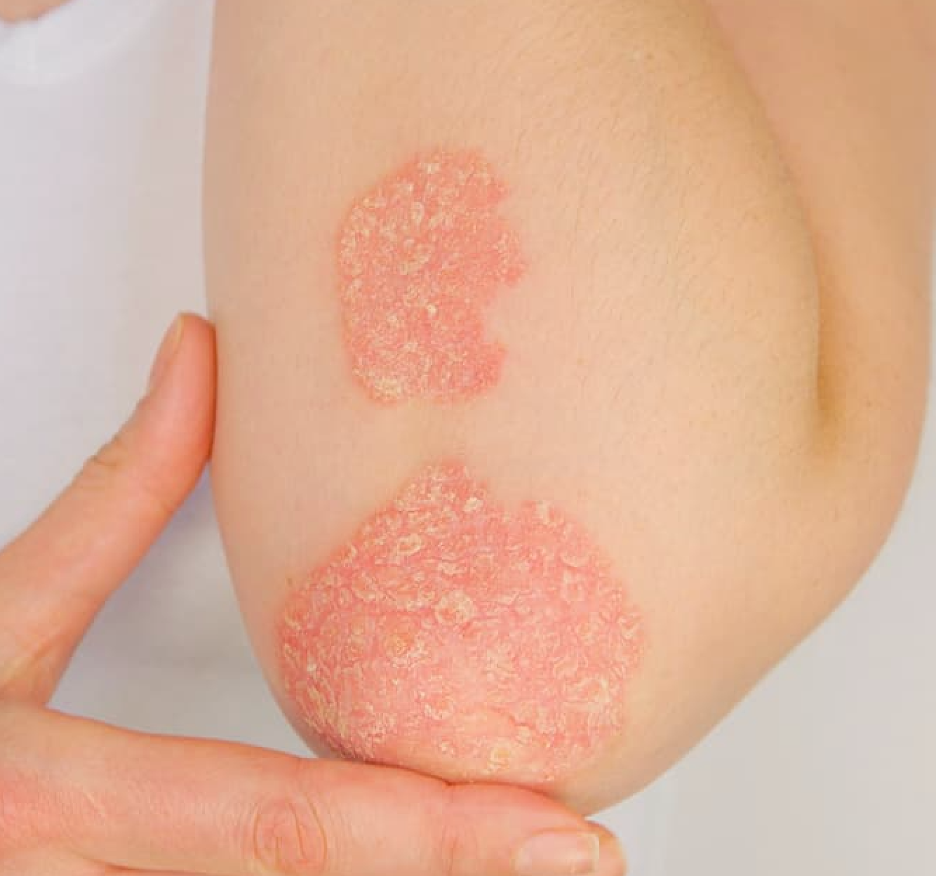News
Article
Late-Onset Psoriasis May Shorten Interval Between Psoriasis and PsA Diagnoses
Author(s):
Older age and a greater BMI are associated with having a shorter interval between psoriasis and PsA diagnoses, a study found.
Shashank Cheemalavagu, MD
Credit: Cleveland Clinic

A recent study suggests patients diagnosed with psoriasis at an older age have a shorter interval between psoriasis and psoriatic arthritis (PsA) diagnoses than patients diagnosed with psoriasis earlier.1
Patients with psoriasis are at risk of developing PsA; following a psoriasis diagnosis, about 75% of people develop PsA. 2 A study published earlier this year found psoriasis patients have greater odds of developing PsA if they are female, severe disease, nail involvement, and require oral systemic therapy for their condition.3 A new study, led by Shashank Cheemalavagu, MD, from Cleveland Clinic in Ohio, sought to identify clinical and demographic features associated with a shorter interval between psoriasis and PsA diagnosis.1
“Given the high rates of undiagnosed PsA or delayed diagnoses in PsA and the frequency of erosions in patients with PsA on first presenting to rheumatologic care, there is an urgent need to identify patients with [psoriasis] who are more likely to develop PsA in a short period of time,” investigators wrote.
The team leveraged data on clinical information and patient-reported outcomes from their tertiary care psoriatic disease biorepository, a longitudinal, real-world database. Investigators identified patients diagnosed with psoriasis and PsA. The study ultimately included 384 patients with approximately half female (52.2%). The mean age of psoriasis onset was 31.5 years.
Cheemalavagu and colleagues used a multivariable zero-inflated negative binomial model to assess clinical and demographic features that may be associated with the time between the diagnosis of psoriasis and PsA.
Investigators found psoriasis onset at an older age was linked to a shorter interval between a diagnosis of psoriasis and PsA. The model showed patients with a psoriasis onset at age 42.6 years had a 62% shorter expected interval compared to patients with a psoriasis onset at age 18.9 years (P < .001). Patients aged 42.6 years were also 4.56 times more likely to have psoriasis and PsA onset within 6 months of other (odds ratio [OR], 4.56; 95% confidence interval [CI], 2.9 – 7.17).
“Interestingly, no other comorbid condition, treatment status, or demographic feature contributed significantly to the interval between diagnoses in our study,” investigators wrote.
Since an increased age is linked to an increased burden of comorbidities, the team evaluated the relationship between the number of comorbid cardiovascular and metabolic comorbidities with the interval length between psoriasis and PsA diagnoses. However, they found no relationship between the increased comorbidities and the shorter interval between diagnoses.
Moreover, investigators found patients with a BMI of 34 had a 10% shorter interval between their psoriasis and PsA diagnoses than patients with a BMI of 26 (P = .053). Patients with hypertension, hyperlipidemia, or diabetes mellitus had a 24% increase in the expected interval between psoriasis and PsA diagnoses, but this did not reach statistical significance.
Investigators also examined alcohol use believing this would shorten the interval between psoriasis and PsA diagnosis. Instead, they found alcohol use reduced the risk of having concurrent diagnoses of psoriasis and PsA.
“This result, although statistically significant in the opposite direction than we had presumed, highlights the lack of relationship between alcohol use and a shorter latency period,” investigators wrote. “This unexpected result may also be related to the inherent variability in the alcohol use data point. Given the nature of our cohort, we could not identify the timing, duration, and extent of alcohol use, all of which may be factors that contribute to the relationship between alcohol and the interval between [psoriasis] and PsA diagnoses.”
Likewise, elevated markers of inflammation through either the erythrocyte sedimentation rate, C-reaction protein, or both, were also linked to a reduced risk of having concurrent psoriasis and PsA diagnoses. Lastly, investigations found no association between interval length and type of therapy (conventional synthetic disease-modifying antirheumatic drug (DMARD), biologic DMARD, and no DMARD).
Investigators wrote how the study was limited by not having data on psoriasis subtypes, such as inverse, palmer, and pustular, which could have impacted the interval between diagnoses.
“Knowing that patients diagnosed with [psoriasis] at a later age are more likely to have a concurrent diagnosis of PsA may prompt primary care physicians and dermatologists to apply screening tools for PsA more frequently in older patients with [psoriasis,” investigators wrote. “Using this knowledge may allow us to better stratify which patients require more frequent screening and earlier referral to rheumatology for evaluation of PsA.”
References
- Cheemalavagu S, Jin Y, Husni ME. What Clinical Factors Affect Length of Transition to Psoriatic Arthritis in Patients With Psoriasis?. ACR Open Rheumatol. Published online June 28, 2024. doi:10.1002/acr2.11703
- Phillips, R. PRESTO estimates PsA risk for patients with psoriasis. Nat Rev Rheumatol 19, 607 (2023). https://doi.org/10.1038/s41584-023-01026-z
- Smith, T. Female Patients with Psoriasis, Related Clinical Characteristics More Likely to Develop Psoriatic Arthritis. HCPLIve. February 11, 2024. https://www.hcplive.com/view/female-patients-with-psoriasis-related-clinical-characteristics-more-likely-to-develop-psoriatic-arthritis. Accessed July 12, 2024.





